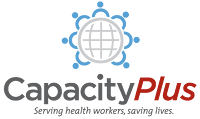South Asia
Strengthening Human Resource for Health in South-East Asia: Time for Action and Commitment (Report of a regional meeting, Thimphu, Bhutan, 19–21 November 2014)
The meeting was organized under three themes: (i) rural retention of health workforce; (ii) transforming and scaling up health professionals’ education and training; and (iii) human resources for health in the context of universal health coverage(UHC). [from abstract]
- 704 reads
Regional Strategy on Strengthening Health Workforce Education and Training in South - East Asia Region (2014 – 2019)
The Regional strategy on strengthening health workforce education and training in the South-East Asia Region specifically identifying priority activities to be initiated by WHO and Member countries, will guide and facilitate country initiatives on strengthening health workforce. WHO is totally committed to play the lead role in catalysing the implementation of this regional strategy. [from abstract]
- 603 reads
Health Care Providers’ Perceptions of and Attitudes Towards Induced Abortions in Sub-Saharan Africa and Southeast Asia: A Systematic Literature Review of Qualitative and Quantitative Data
The aim of this study was to identify, summarise and synthesise available research addressing health care providers’ perceptions of and attitudes towards induced abortions in sub-Saharan Africa and Southeast Asia. [from abstract]
- 751 reads
Comparative Study on Health Care System Between Myanmar and China According to World Health Organization (WHO)’s Basic Health Blocks
This paper is a comparative analysis between China’s and Myanmar’s health systems, viewed through the WHO’s six building blocs of health systems: service delivery, health workforce, health information, access to essential medicines, health financing, leadership or governance.
- 832 reads
New Technology and Illness Self-Management: Potential Relevance for Resource-Poor Populations in Asia
The aim here is to explore the extent to which further investment in technology could play a role in the development of an effective and affordable health sector strategy for at least some developing economies. It is suggested that the effectiveness of the approach may be highly dependent on the specific health conditions addressed, the nature of existing health systems and the overall socio-economic and cultural context. [from abstract]
- 470 reads
The Correlation of Health Spending and Infant Mortality Rate in Asian Countries
Infant Mortality Rate (IMR) is one of the most vital health indicators. A number of factors impact and
influence IMR. One of the most important ones could be public health spending. Health spending however is not
uniform throughout Asia and varies from region to region. [from abstract]
- 469 reads
Who Gives Birth in Private Facilities in Asia? A Look at Six Countries
As Asia has shown strong increases in institutional coverage of delivery care in the last decade, we will examine trends in six Asian countries. We hypothesize that if the private sector competes for clients based on perceived quality, their clientele will be wealthier, more educated and live in an area where there are enough health facilities to allow for competition. [from abstract]
- 502 reads
Training Module on Development of Health Workforce Strategic Plans
This guide is to help the facilitators and trainers in
organizing training in their countries to create health workforce strategic plans. The training is based on the World Health Organization’s Regional Guidelines for the Development of the
Health Workforce Strategic Plan in countries of the South-East Asia Region. [adapted from author]
- 1161 reads
Regional Strategic Plan for Strengthening Health Service Management in the South-East Asia Region
This strategic plan is intended to provide directions for countries to develop comprehensive interventions to strengthen the management of health systems and health sector managers in a coherent and systematic manner. [adapted from author]
- 940 reads
Human Resources for Health Planning and Management in the Eastern Mediterranean Region: Facts, Gaps and Forward Thinking for Research and Policy
The objectives of this paper are to: lay out the facts on what we know about the HRH for EMR countries; generate and interpret evidence on the relationship between HRH and health status indicators for LMICs and middle and high income countries (MHICs) in the context of EMR; identify and analyze the information gaps and provide forward thinking by identifying priorities for research and policy. [abstract]
- 5918 reads
Human Resources for Health in South East Asia
This document outlines the Programme for Development of Human Resources for Health (HRH) in the WHO South East Asia Region, whose overall aim is to collaborate with the Member Countries to correctly plan, effectively train, efficiently deploy and optimally utilize the types and numbers of health personnel that they require to meet the needs of their health systems. [from introduction]
- 2622 reads
Implications of Health Sector Reform for Human Resources Development
The authors argue that health for all is not achievable in most countries without health sector reform that incorporates a process of coordinated health and human resources development. They examine the situation in countries in the Eastern Mediterranean Region of the World Health Organization.
- 6108 reads
Community Development and Its Impact on Health: South Asian Experience
Most South Asian governments have concentrated on emulating a Western style of healthcare service, with the result that an elite few are overmedicalised whereas the majority are neglected. However, community participation in the development of local health services could provide a solution. [abstract]
- 4924 reads




